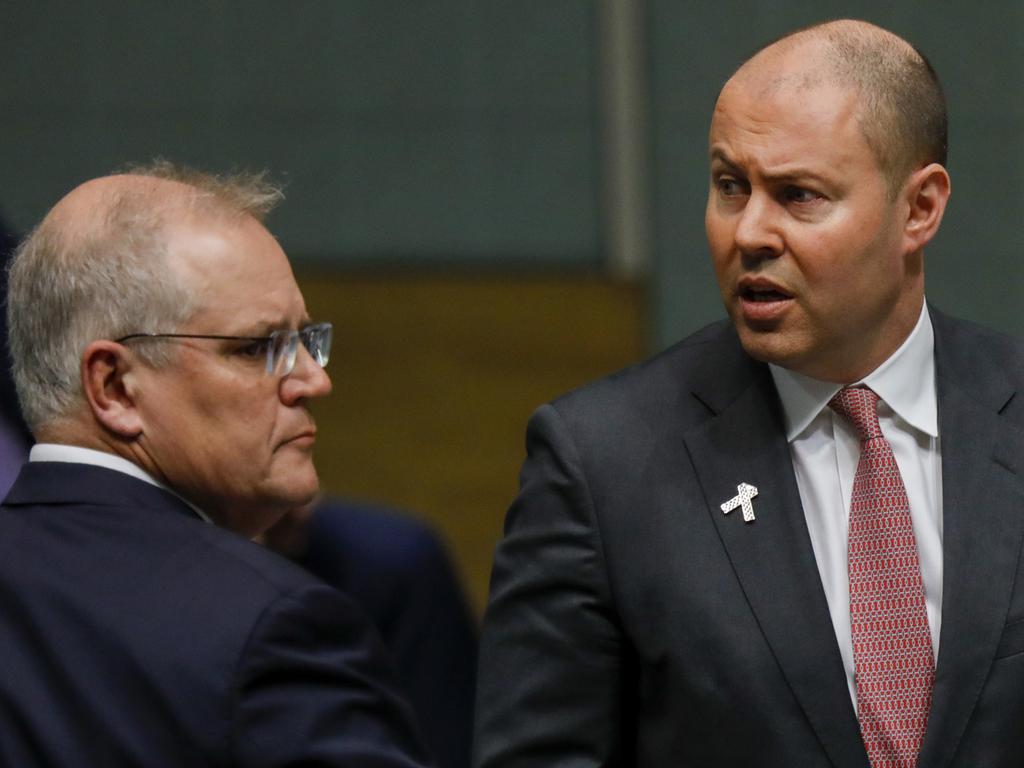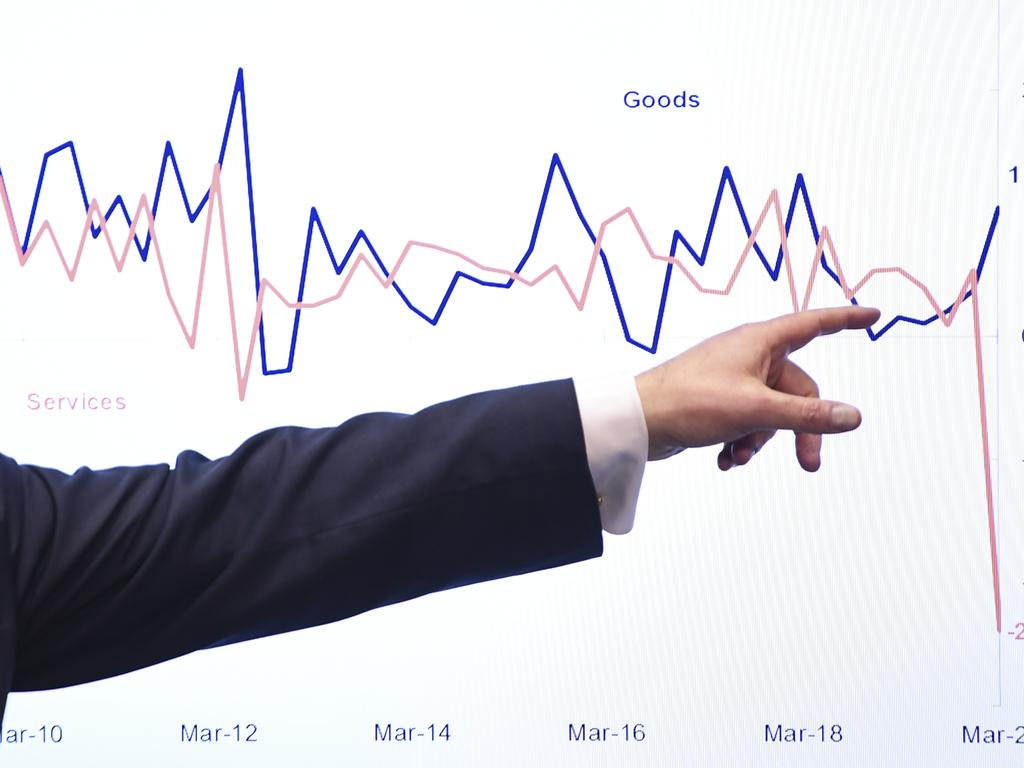Why Australia’s 2020 recession is one like no other


We’re technically in a recession, but the pain won’t be felt for many months yet.
Economic output, as measured by GDP, collapsed by 7 per cent between the March and June quarters, more than it ever has since quarterly records began back in 1959.
In dollars, quarterly production — or output, if you prefer, they are two sides of the same coin — was almost $35bn lower than in the December quarter, which was when the economy began to shrink.
The previous biggest contraction was in 1974, when the economy shrank 2 per cent.
But it’s not the sheer size of this contraction that distinguishes it, it’s the extraordinary deluge of government support payments, which flooded the bank accounts of households and businesses like never before, more than making up for the slump in privately generated income.
Indeed, households overall enjoyed a 2.2 per cent increase in their gross income.
Households’ earnings from unincorporated businesses — sole traders and partnerships — even surged 22 per cent, thanks to an alphabet soup of federal support payments.
Businesses received $31bn in JobKeeper payments over the three months — “an amount that exceeds the cumulative sum of all previous employment subsidies”, the Australian Bureau of Statistics said — and $16bn in other cash subsidies.
Social security payments paid directly to households jumped by a historic 42 per cent or $14.4bn, mainly as a result of the supercharged JobSeeker payment. With money raining down on them and fewer places to shop, households saved a lot more. The saving ratio soared to almost 20 per cent, up from 6 per cent in March, as spending collapsed — the highest level of saving since 1974.
By contrast, household consumption, at about 60 per cent and the biggest component of GDP, collapsed by 12 per cent, which accounted for more than 95 per cent of the fall in GDP.
Looking across the states, NSW was the worst-affected by the end of June, although Victoria, with at least two weeks of stage-four lockdown to go, will probably end up in a sorrier state when the September national accounts emerge.
With such government generosity it was no surprise that government net saving was $82.6bn, the largest negative outcome on record.
The big question is what happens when all these support payments, underpinned by borrowed money — largely from overseas — start to dry up. Will privately generated income — all those lost wages and salaries — bounce back? “Snapback”, as an economic phenomenon, remains to be tested.
This recession will have one thing in common with other recessions, however: our political leaders will say we had to have it, just as Paul Keating did in the early 1990s. We’ll be told all the economic and social suffering was necessary to avoid the death of swaths of the population.
History will have more to say on that question as we learn more about the virus and about the efficacy of our response to it.
If there’s a silver lining to this, it’s that we don’t have to hear the self-congratulatory refrain about “29 years of uninterrupted growth” ever again.
We had at least three per-capita recessions during that period, which is what matters for living standards.
Unless immigration returns to “normal”, we’re going to have to work a lot harder for our growth from here on.







If it’s the biggest recession we have ever had, it’s also the weirdest: production collapsed, as expected, but we earned more.